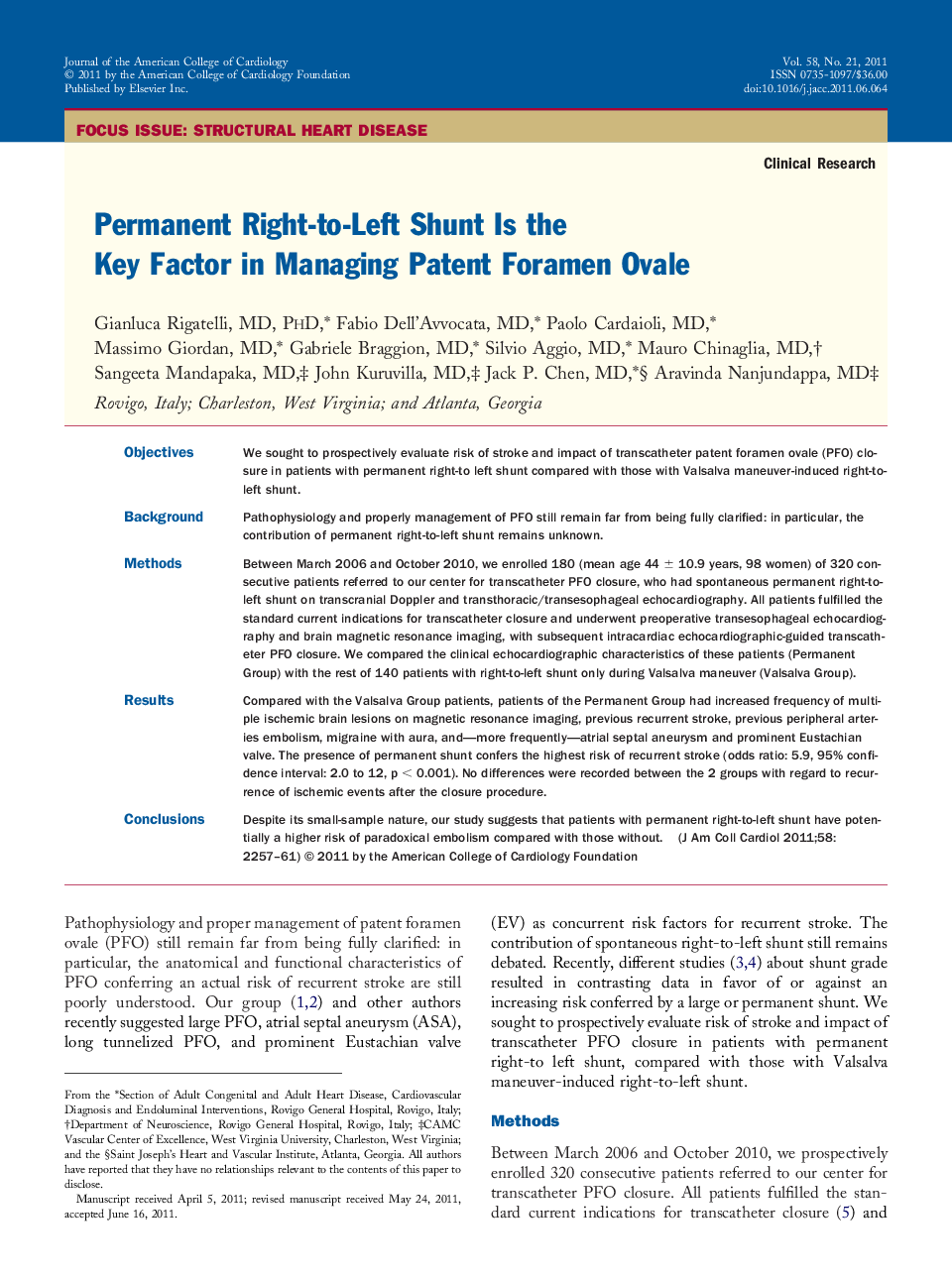| کد مقاله | کد نشریه | سال انتشار | مقاله انگلیسی | نسخه تمام متن |
|---|---|---|---|---|
| 2947472 | 1577237 | 2011 | 5 صفحه PDF | دانلود رایگان |

ObjectivesWe sought to prospectively evaluate risk of stroke and impact of transcatheter patent foramen ovale (PFO) closure in patients with permanent right-to left shunt compared with those with Valsalva maneuver-induced right-to-left shunt.BackgroundPathophysiology and properly management of PFO still remain far from being fully clarified: in particular, the contribution of permanent right-to-left shunt remains unknown.MethodsBetween March 2006 and October 2010, we enrolled 180 (mean age 44 ± 10.9 years, 98 women) of 320 consecutive patients referred to our center for transcatheter PFO closure, who had spontaneous permanent right-to-left shunt on transcranial Doppler and transthoracic/transesophageal echocardiography. All patients fulfilled the standard current indications for transcatheter closure and underwent preoperative transesophageal echocardiography and brain magnetic resonance imaging, with subsequent intracardiac echocardiographic-guided transcatheter PFO closure. We compared the clinical echocardiographic characteristics of these patients (Permanent Group) with the rest of 140 patients with right-to-left shunt only during Valsalva maneuver (Valsalva Group).ResultsCompared with the Valsalva Group patients, patients of the Permanent Group had increased frequency of multiple ischemic brain lesions on magnetic resonance imaging, previous recurrent stroke, previous peripheral arteries embolism, migraine with aura, and—more frequently—atrial septal aneurysm and prominent Eustachian valve. The presence of permanent shunt confers the highest risk of recurrent stroke (odds ratio: 5.9, 95% confidence interval: 2.0 to 12, p < 0.001). No differences were recorded between the 2 groups with regard to recurrence of ischemic events after the closure procedure.ConclusionsDespite its small-sample nature, our study suggests that patients with permanent right-to-left shunt have potentially a higher risk of paradoxical embolism compared with those without.
Journal: Journal of the American College of Cardiology - Volume 58, Issue 21, 15 November 2011, Pages 2257–2261